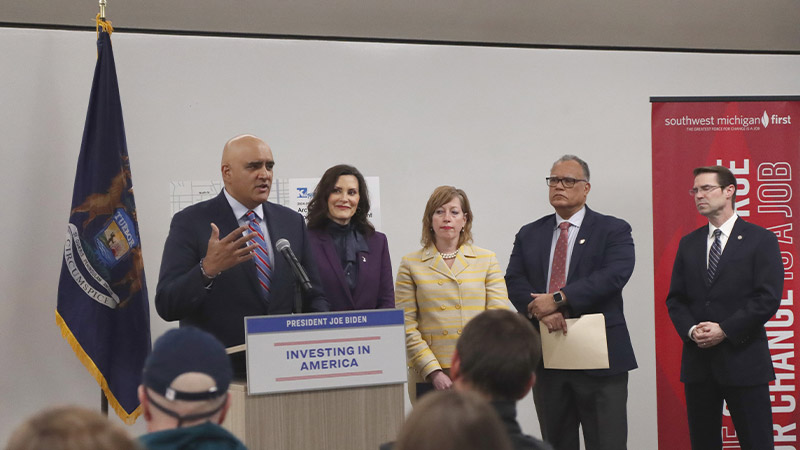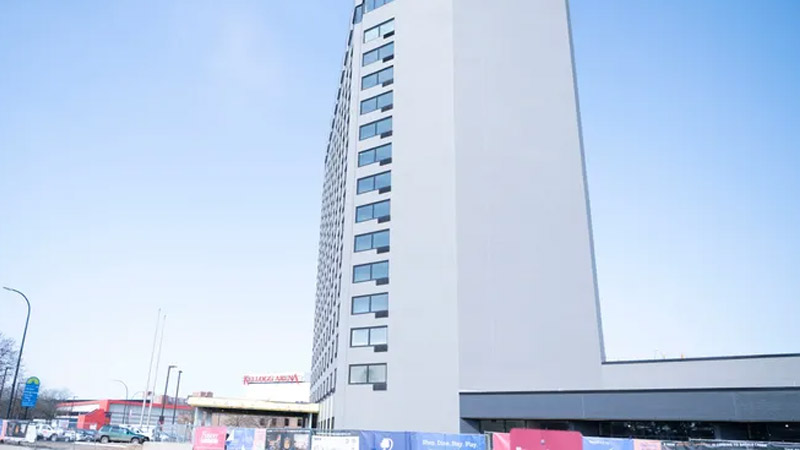Not seasonally adjusted jobless rates edged down slightly in 10 of Michigan’s 17 major labor market areas during March, with monthly rate decreases ranging from 0.1 to 0.3 percentage points, according to data released from the Michigan Department of Technology, Management & Budget (DTMB). “Michigan regional jobless rates displayed little change in March,” confirmed Wayne Rourke, associate director of the Bureau of Labor Market Information and Strategic Initiatives. “Nonfarm job levels advanced modestly in nearly all Michigan metro areas over the month.” Minor rate advances were observed over the month in the Detroit, Lansing, and Ann Arbor metropolitan statistical areas (MSAs). The Grand Rapids, Kalamazoo, and Midland MSA rates, as well as the Upper Peninsula region rate, were all unchanged in March.
Visit the DTMB’s site to see rankings by county, county labor force numbers, and an overall snapshot of Michigan’s employment or download a summary report here provided by local economic development catalyst Southwest Michigan First.
The National Outlook
The national unemployment rate in March 2021 was 6.2 percent, not seasonally adjusted, which represents a 1.7 percentage point increase from the previous year and a 0.4 percentage point reduction from the previous month. Year over year, unemployment rates were higher in March 2021 in 308 of the 389 metropolitan areas, lower in 75 areas, and unchanged in six. The MSA with the highest unemployment rate in the country for March 2021, not seasonally adjusted, was in El Centro, CA, with a rate of 15.7 percent. This was one of 16 metropolitan areas with a jobless rate over 10.0 percent. The lowest not seasonally adjusted unemployment rate was recorded in Logan, UT-ID at 2.1 percent.
Here in Michigan
The state of Michigan posted a March 2021 unemployment rate of 5.2 percent, 1.0 percentage points below national average. This represents a 0.1 percentage point decrease from February 2021’s rate of 5.1 percent, and a 0.7 percentage point increase from March 2020, when a rate of 4.5 percent was recorded. For Michigan MSAs, Ann Arbor had the lowest unemployment rate in March 2021 at 4.3 percent. Detroit-Warren-Dearborn was close behind with a rate of 4.5 percent in February 2021. Those areas were followed by Grand Rapids-Wyoming at 4.7 percent, Lansing-East Lansing at 5.0 percent, and Midland at 5.2 percent to round out the top five performing MSAs. Kalamazoo-Portage fell short of that mix coming in at 5.4 percent. The Muskegon MSA put up the highest rate at 7.5 percent.
The Regional Labor Market Picture
Here is the data breakdown on the region’s three labor markets which are the Kalamazoo-Portage, MI MSA, Battle Creek, MI MSA, and Niles-Benton Harbor MSA.
- The Kalamazoo-Portage, MI MSA’s unemployment rate of 5.4 percent in March 2021 was unchanged from February 2021. This is a 1.8 percentage point increase from a year ago in March 2020, when an unemployment rate of 3.6 percent was recorded. At 0.8 percentage points below the national average, the Kalamazoo-Portage, MI MSA is 0.2 percentage points above the state’s 5.2 percent rate. The number of unemployed persons in the MSA dropped by 43 from February 2021 (8,729 unemployed persons) to March 2021 (8,686 unemployed persons). The total civilian labor force grew over the month by 78 persons from 161,255 in February 2021 to 161,333 in March 2021. Back in March 2020, the total civilian labor force was 169,763. At the height of the unemployment effects due to COVID-19 in April 2020, the Kalamazoo-Portage, MI MSA had an unemployment rate of 18.0 percent, with 28,322 unemployed persons and a total civilian labor force of 157,198. Over the course of 11 months to March 2021, the MSA has seen a 12.6 percentage point reduction in its unemployment rate, a reduction in the number of unemployed persons by 19,636, and a gain of 4,135 in total civilian labor force.
- In March 2021, the Battle Creek, MI MSA posted an unemployment rate of 6.4 percent, a rate 0.1 percentage points lower than it was in February 2021 at 6.5 percent. This is a 2.7 percentage point increase from a year ago in February 2020, when an unemployment rate of 3.7 percent was recorded. This MSA’s unemployment rate is 0.2 percentage points higher than the national average, and 1.2 percentage points above Michigan’s unemployment rate of 5.2 percent.The number of unemployed persons in the Battle Creek, MI MSA grew by 57 from February 2021 (3,880 unemployed persons) to March 2021 (3,823 unemployed persons). The MSA’s total civilian labor force grew over the month by 183 persons from 59,805 in February 2021 to 59,988 in March 2021. The total civilian labor force was 61,787 in March 2020. At the height of the unemployment effects due to COVID-19 in April 2020, the Battle Creek, MI MSA had an unemployment rate of 24.6 percent, with 14,884 unemployed persons and a total civilian labor force of 60,383. Over the course of 11 months to March 2021, the MSA has seen an 18.2 percentage point reduction in the unemployment rate, a drop in the number of unemployed persons by 11,0061, and an increase of 395 in total civilian labor force.
- The Niles-Benton Harbor, MI MSA’s unemployment rate of 5.8 percent for March 2021 was 0.2 percentage points lower than its 6.0 percent February 2021 rate. This is a 2.2 percentage point increase from a year ago in March 2020, when unemployment was recorded at 4.0 percent. The MSA’s unemployment rate is 0.4 percentage points below the national average but is 0.6 percentage points above Michigan’s rate of 5.2 percent. The number of unemployed persons in the Niles-Benton Harbor, MI MSA dropped by 104 from February 2021 (4,233 unemployed persons) to March 2021 (4,129 unemployed persons), while its total civilian labor force grew over the month by 124 persons from 70,488 in February 2021 to 70,612 in March 2021. The total civilian labor force was 72,897 in March 2020. At the height of the unemployment effects due to COVID-19 in April 2020, this MSA had an unemployment rate of 20.0 percent, with 14,107 unemployed persons and a total civilian labor force of 70,427. Over the course of 11 months to March 2021, Niles-Benton Harbor, MI MSA has seen a 14.2 percentage point reduction in the unemployment rate, a reduction in number of unemployed persons by 9,978, and a gain of 185 in total civilian labor force.
County by County: St. Joseph County Breaks the 5.0 Percent Jobless Rate Barrier This Month
When breaking the numbers down by county, the combined seasonally unadjusted March 2021 jobless rate of 5.6 percent for the seven-county Southwest Michigan region was down 0.1 percentage points from February 2021. Among regional counties, St. Joseph posted the lowest seasonally unadjusted unemployment rate in March 2021 at 4.9 percent, followed by Branch County with a rate of 5.0 percent, and Kalamazoo County with a rate of 5.1 percent. Cass County had the highest reduction in unemployment rate month-over-month of 0.3 percentage points.
The region recorded a total labor force of 362,688 in March 2021, representing a 457-person expansion from the 362,231-person labor force in February 2021. Employed persons also grew by 770 over the month from 341,714 in February 2021 to 342,484 in March 2021. The number of unemployed persons contracted 313 over the month from 20,517 in February 2021 to 20,204 in March 2021.
At peak COVID-19 disruptions in April 2020, the seven-county region had 74,851 unemployed persons with a labor force of 357,815 and 282,964 employed persons. This represented an aggregate unemployment rate of 20.9 percent. Over the 11 months since April 2020, the seven-county region has seen a reduction in unemployment rate of 15.3 percentage points. The region has also seen a reduction of unemployed persons by 54,647, an increase in employed persons by 59,520, and an increase in labor force by 4,873 persons.

Source: Michigan DTMB: Michigan Bureau of Labor Market Information and Strategic Initiatives, Local Area Unemployment Statistics (LAUS), March 2021. Notes: All estimates are preliminary. Data is not seasonally adjusted.




